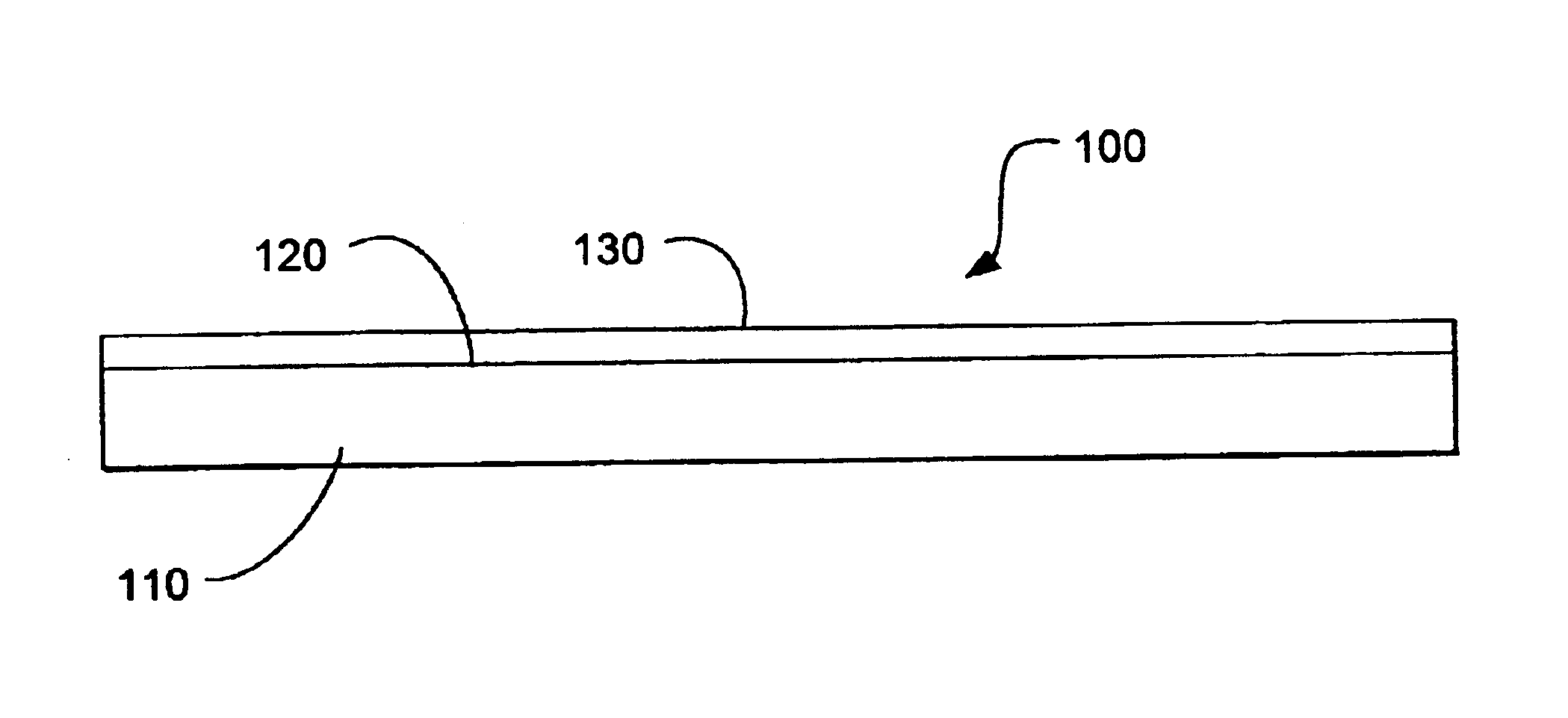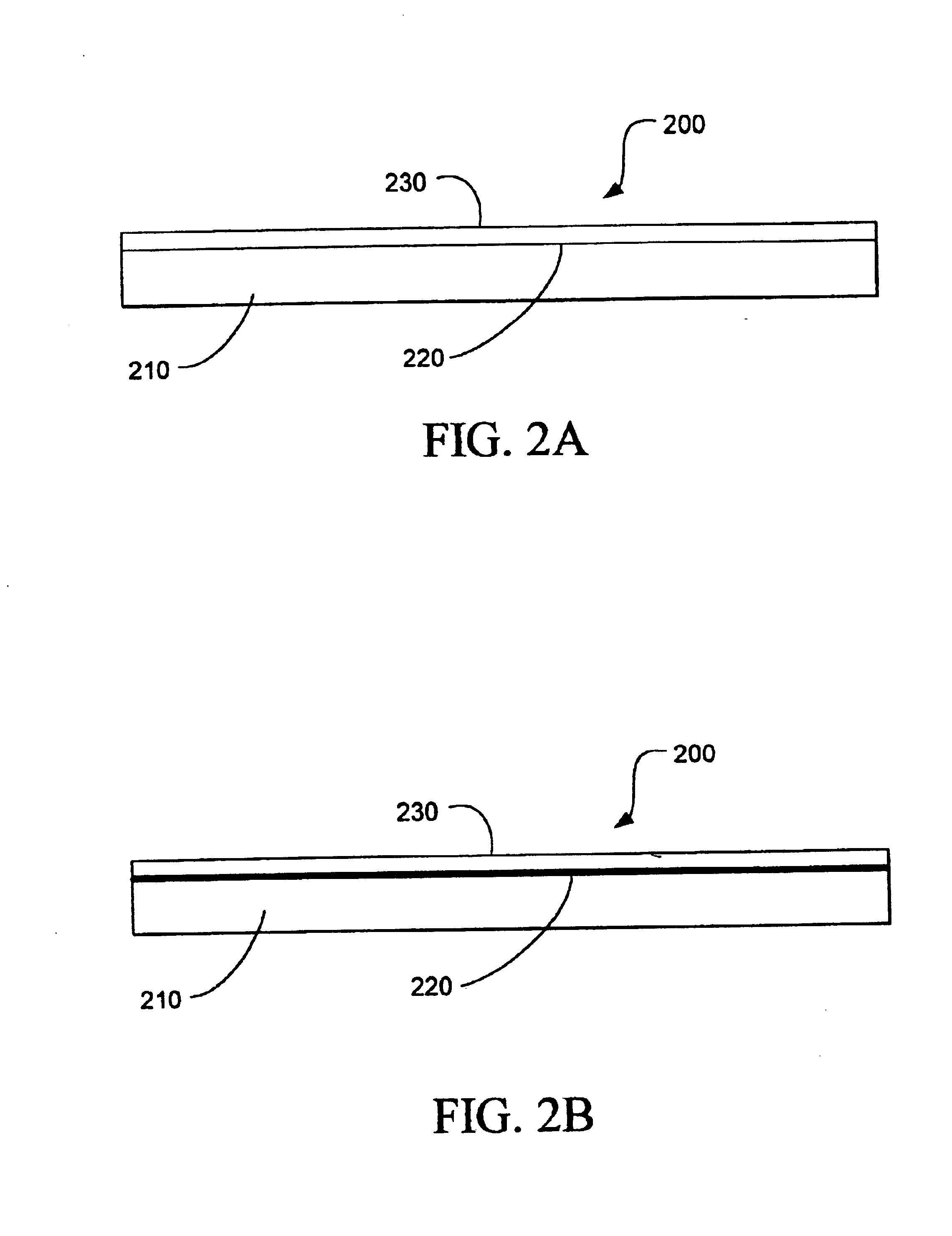A goal of the invention is to simultaneously satisfy the above-discussed requirements of low cost, limited content lifetime, avoidance of rental returns and minimum changes to existing manufacturing processes which, in the case of the prior art, are not simultaneously satisfied.
One aspect of our invention consists of attacking solely, primarily or first the table of contents (or
directory) information on an optical disk. This could be achieved by several approaches, such as a
coating, modifying the properties of the substrate, or damaging the
metal layer. Benefits include higher manufacturability because a smaller part of the disk may need to be rendered inoperable, and more abrupt deterioration, as instead of deteriorating parts of the video content on a DVD, possibly in a gradual process, attacking the table of contents will prevent the player from accessing entire sections of the video content, and render the disk unplayable in a relatively sharp
time frame. This is likely to be preferable to having an extended period during which the disk is playable, but not at full quality. It should be noted that because of the much stronger error correction in the table of contents, previous approaches such as Smith et al, would likely result in the table of contents failing last. Our invention recognizes, however, the benefit of having the table of contents fail first. In order to make the table of contents (or any other part of the disk) more vulnerable the disk could be mastered with a lower level of error correction in this region, a small set of errors could be intentionally introduced in mastering or manufacturing, or a substrate or
coating could be used which already was less-than-perfectly readable.
In a further improvement to other proposed approaches, an aspect of our invention consists of increasing the thickness of the material that interferes with reading of the optical data. For instance instead of a
coating of a few microns, our invention would allow a layer of material up to the thickness of the substrate, possibly reaching all the way to the
metal layer. That would facilitate interfering with the reading
laser. For example, it would make it easier to absorb or reflect enough
laser light to prevent the
laser from reading the data on the disk. It would also make it substantially more difficult for a user to defeat this mechanism by
polishing off a thin coating, either mechanically or through the use of a
solvent. In one embodiment, this invention would consist of pores or trenches of appropriate dimensions that are imprinted on the substrate during the molding process, by using a specially engineered molding plate instead of the standard flat plate (“mirror”). In another embodiment the shape of these pores or trenches would help prevent the reading of data. For example, a trench (or set of pores) with angled walls over the
directory area of a DVD could be filled with a material that changes its
refractive index upon
exposure to the environment, or physically shrinks allowing air, other gases or vacuum to fill in the gap, or expands. In any of these cases, after the change in the filling material occurs, the laser beam may be reflected at the boundary of the trench or its interior, thus being prevented from reliably reading the data on the disk.
In another aspect of our invention, small bubbles, crystals, particles or cracks could form in the coating or substrate, making the data unreadable. For instance a substance (in gas,
solid or other state) could gradually precipitate or otherwise separate from other parts of the disk and thereby create interference for the
light beam. In addition to potentially being easier to achieve than a uniformly increasing
opacity, this approach may more successfully interfere with the
readability of the disk.
In another embodiment, a water-soluble opaque substance over the table of contents or the entire surface of the disk would prevent the disk from being played. The user would need to wipe off with a wet cloth this substance, in order to make the disk playable. The water and
moisture would then trigger the process that renders the disk unplayable. Other embodiments could require user actions such as heating or cooling the disk, squeezing or shaking, exposing to
microwave radiation in a
microwave oven,
exposure to
bright light,
exposure to
ultraviolet light dipping in water or other substances, wiping or otherwise exposing the disk to some chemical, or removing or changing some component of the disk. The users actions would relatively quickly render the disk (temporarily) playable. However, they would also set in motion a different and effectively irreversible sequence or set of reactions which eventually render the disk unplayable. The
advantage of this general strategy is that instead of relying only or primarily on relatively passive environmental conditions to render the disk unplayable, our invention leads the user to take a more drastic action which may provider a sharper starting point for the time period before the disk becomes unplayable and expand the set of reactions and approaches which can be considered.
 Login to View More
Login to View More  Login to View More
Login to View More 


